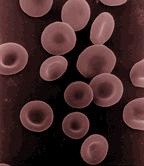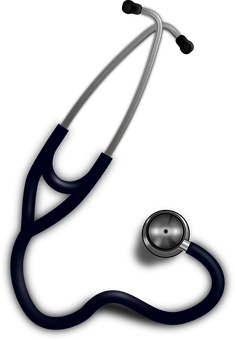Michelle Venables was an electrical engineering student at the University of Southern California in the fall of 2003. She is an Atlanta native and enjoys playing basketball and reading poetry.
Doping is the use of performance enhancing drugs or methods by athletes to gain a competitive advantage. Blood oxygenation enhancement is a type of doping that artificially increases an individual’s hemoglobin concentration above normally occurring levels. Two common methods of blood doping are blood transfusion, or the transfer of blood into a person’s vein, and stimulation of endogenous erythrocyte production. Both methods result in increased hemoglobin levels in the blood, which correlate to an increase in maximum oxygen uptake because the additional hemoglobin molecules can transport extra oxygen molecules throughout the body. The end result is improved athletic endurance and performance. The two subgroups of artificial oxygen carriers are modified hemoglobin solutions and perfluorochemicals. They are manufactured substances designed to aid in the transport of oxygen throughout the body and achieve the same end as blood doping.
Introduction
The use of performance enhancing drugs and techniques by the world’s top athletes has been a persistent issue in world sporting events for nearly four decades, and in fact, dates all the way back to the Ancient Greeks who used mushrooms, ginseng root, and opium to enhance their athletic prowess. While some athletes choose not to participate in such practices, others take advantage of the world’s technological and medical advancements to gain a competitive edge.
Artificial means of enhancing oxygen transport throughout the body include blood transfusions, specialized high-altitude training techniques, and newly engineered medical substances, and can enable athletes to take advantage of faster and less strenuous means of improving endurance and performance. While many athletic organizations prohibit blood doping, detecting the practice proves increasingly difficult as methods become more refined, obscuring what many consider to be an ethical boundary in sports.
How can one tell, for example, if an athlete’s high hormone level is due to his or her genetic makeup or if it was induced by artificial means? Additionally, should “natural” (i.e., non-drug-based) techniques that improve blood oxygenation efficiency be regulated? Despite these uncertainties, inherent physical benefits make artificial performance enhancement an alluring prospect for many of today’s athletes.
How Muscles Work
Carbohydrates, which are stored in muscles as a sugar called glycogen, are used as the body’s raw fuel during exercise. Glycogen is converted to mechanical energy via a metabolic process called glycolysis, in which sugar molecules are broken down into pyruvic acid and energy is released to form adenosine tri-phosphate (ATP). If sufficient oxygen is available in the cell, the pyruvic acid enters the mitochondria where more ATP is produced. If there is an oxygen deficiency, however, the pyruvic acid converts to another chemical: lactic acid. When large amounts of lactic acid build up in the muscle cell, the acid overflows into the bloodstream and begins to impede muscle contraction [1]. Thus, the accumulation of lactic acid, which results from an oxygen deficiency in the cell, is a major contributor to muscle fatigue.
Blood itself is composed of plasma, platelets, white blood cells, and red blood cells. Of these, red blood cells (erythrocytes) are the most relevant to blood oxygenation enhancement. Erythrocytes travel through the body delivering oxygen and removing carbon dioxide. Their red color is due to a chemical protein called hemoglobin, the substance that allows them to transport gases. As blood passes through the lungs, oxygen molecules attach to the hemoglobin, and as blood passes through the body’s tissues, the hemoglobin releases that oxygen to the cells [2]. It is this oxygen that prevents the conversion of pyruvic acid to lactic acid, thereby delaying the onset of muscle fatigue and prolonging an athlete’s ability to perform.
What is Doping?
In general terms, doping is the use of performance enhancing drugs or methods by athletes to gain an advantage over their competition. One such method is blood oxygenation enhancement, which may occur by two distinct means: artificial oxygen carriers and blood doping. Each of these increases an athlete’s ability to transport oxygen in their blood to tissues throughout their body in order to improve endurance and elevate their ability to achieve peak athletic performance.
According to the World Anti-Doping Agency, or WADA, artificial oxygen carriers are defined as “chemicals used to increase the ability to carry extra oxygen in the blood”. They come in the form of modified hemoglobin solutions and perfluorochemicals.
WADA defines blood doping as “the administration of blood or blood-related products in order to increase the number of red blood cells in the body”. Specifically, this may occur by blood transfusion or by the endogenous stimulation of red blood cell production via actual or simulated hypoxic conditions or the use of a synthetic hormone called erythropoietin.
Artificial Oxygen Carriers
Artificial oxygen carriers are manufactured substances designed to aid in the transport of oxygen throughout the body. As noted previously, hemoglobin is the natural oxygen carrier in human blood. To exploit this, scientists have tried to isolate hemoglobin from erythrocytes so that it can be infused directly into humans. When the isolated hemoglobin is administered, however, a chemical breakdown occurs resulting in the production of toxins. The search for a combatant to that breakdown has lead to the development of three generations of modified hemoglobin solutions, the latest of which involves the encapsulation of the contents of erythrocytes inside artificial erythrocytes with artificial membranes. Research is still being conducted, but the future of such technologies appears to be promising [3].
The second category of artificial oxygen carriers is perfluorochemicals, or PFCs, which are synthetic fluids in which oxygen can be dissolved. Specifically, oxygen molecules are dissolved in the PFC particles as the particles pass through the lungs via the bloodstream. These particle-oxygen groups then travel to other parts of the body delivering oxygen. It is in this way that PFCs mimic the body’s naturally occurring hemoglobin. The central difference, however, is the mechanical means by which each transports oxygen molecules. PFCs exchange gases—oxygen and carbon dioxide—more readily and efficiently than do hemoglobin molecules because the “loading and unloading” of gases is done by diffusion. Each hemoglobin molecule is only equipped to transport up to four oxygen molecules at a time, so oxygen transfer is limited by the number of hemoglobin molecules present at any given time. With PFCs though, the amount of oxygen transported is related to the solubility of the gas being transported. To increase oxygen transfer, one simply has to increase the oxygen concentration of the gas being inhaled [3]. Athletes began using PFCs to increase blood oxygenation and prolong endurance in the 1980s, and since then the International Olympic Committee has banned their use.
Blood Doping
There are two methods of blood doping: transfusion and the stimulation of endogenous erythrocyte production. Transfusion is the transfer of blood into a person’s vein. Studies have shown that blood transfusion increases an individual’s hemoglobin concentration above normal levels. This increase in hemoglobin levels correlates to an increase in maximum oxygen uptakebecause the additional hemoglobin molecules can transport extra oxygen molecules throughout the body. With more oxygen being supplied to the body’s tissues an athlete’s endurance is heightened, and he or she is able to perform at a more intense level and for a longer period of time [3]. To implement this form of doping, athletes collect and store several units of blood—their own or someone elses’—in the months prior to competition and then transfuse it back into themselves just prior to the event. One well-known instance of this practice occurred at the 1968 Olympic games in Mexico when an athlete broke the outdoor one-hour cycling record. He was accompanied to the games by two cardiologists and eight young men with blood types compatible with his own [3].
The second method of blood doping, stimulation of endogenous erythrocyte production, results from a biological process called erythropoiesis that is normally regulated by tissue oxygenation [4]. When hypoxia occurs, a sensor in the kidneys is triggered which causes increased production of the hormone erythropoietin, or EPO. The EPO then causes more erythrocytes to be produced in the body’s bone marrow. Accordingly, the additional erythrocytes result in the presence of additional hemoglobin molecules, which aid in the delivery of oxygen to the body’s tissues. As this extra oxygen reaches the hypoxic tissues and alleviates the deficiency, the sensor in the kidneys that triggered erythropoiesis shuts off, and the production of additional EPO above normal levels is halted [3].
Erythropoiesis can be induced in two ways: by the administration of synthetic erythropoietin and by the inducement of hypoxic conditions. Synthetic EPO was developed as an anti-anemic drug to treat patients with chronic renal (kidney) failure, AIDS, and cancer, and to treat premature babies [3]. It behaves in the same manner as naturally occurring EPO, and must be injected into the athlete several times a week on a continual basis. At the 2002 Salt Lake City Olympic games, three athletes were excluded from competition after testing positive for a synthetic form of EPO [3].
Hypoxic conditions occur at high altitudes where the air is “thinner”, or has a lower oxygen concentration, than it does under normobaric conditions. Since the air the athlete inhales contains less oxygen per breath, there is less oxygen available to be transported to the athlete’s muscles. This leads to hypoxia, inducing erythropoiesis. It is for this reason that some athletes and coaches have adopted the “live high-train low” altitude training regimen. It aids in improving athletic performance by having athletes live at high altitudes where erythropoiesis is naturally induced, and by having them train at low altitudes where the air is such that they are capable of working out harder [5]. Some French national teams, for example, train at Font-Romeu, a training center located in the Pyrenees Mountains [3].
There are several methods by which an athlete can simulate various altitude conditions. One practice is “normobaric hypoxia via nitrogen dilution”, or simply stated, “hypoxic apartments”. As the name implies, these sea-level living quarters simulate high-altitude conditions. They allow athletes to live and sleep in a hypoxic environment while training at low altitudes. A similar method is to use hypoxic sleeping devices that are designed to allow athletes to “sleep high and train low”. Finally, a reverse approach is the use of supplemental oxygen. It is used to simulate a normobaric training environment for athletes living at high altitudes [5].
Conclusion
There are many methods by which an athlete can artificially enhance his or her body. In endurance sports, maximizing blood oxygenation is vital to improving athletic performance. From simple blood transfusions to the most sophisticated, genetically engineered substances, athletes now have the opportunity to improve their bodies in ways previously unimaginable.
References
[1] D. Vannatta. “Lactic Acid: Friend or Foe?” University of Oregon: International Institute for Sport and Human Performance. http://www.uoregon.edu/~iishp/Vannat.html
[2] The Franklin Institute Online. The Heart: An Online Exploration. http://sln.fi.edu/
[3] A. Gaudard. “Drugs for Increasing Oxygen Transport and Their Potential Use in Doping.” Sports Medicine 33 (2003): 187-212.
[4] J. Spivak. “The Physiologic Basis for the Pharmacologic Use of Recombinant Erythropoietin.” Cancer Control Journal(March/April 1998).
[5] R. Wilber. “Current Trends in Altitude Training.” Sports Medicine 31, (2001): 249-265.
[6] World Anti-Doping Agency. Resource Guide. http://www.wada-ama.org/




